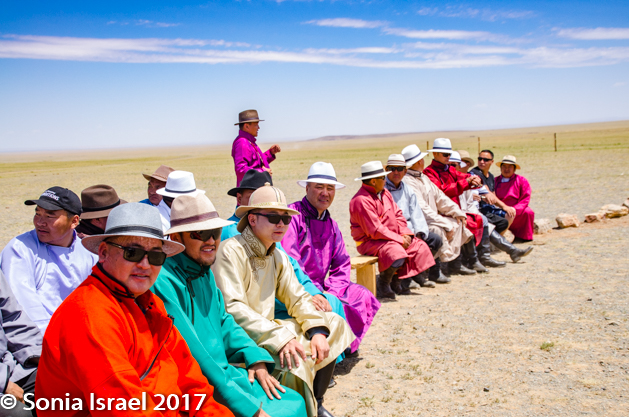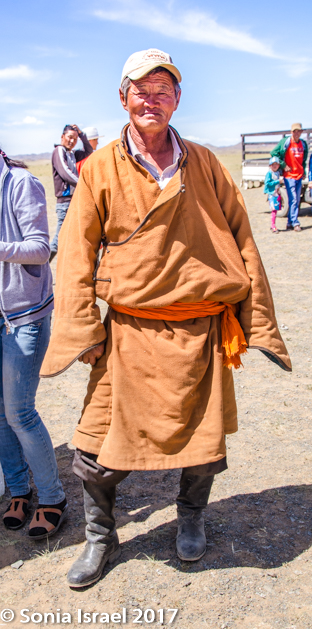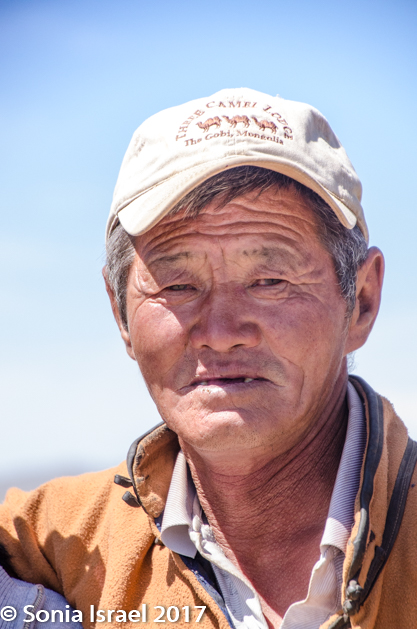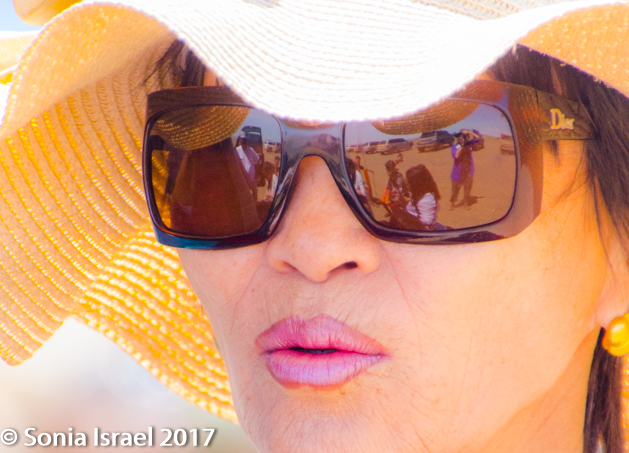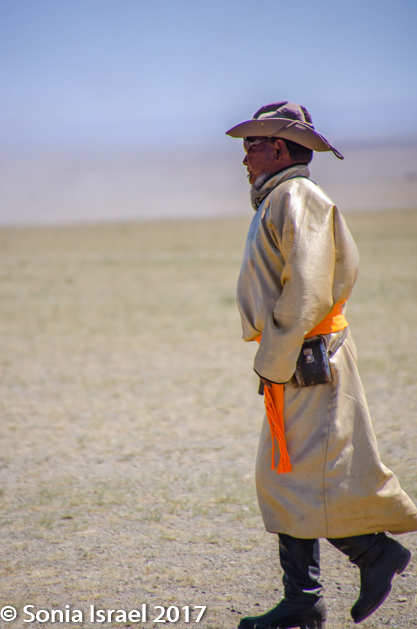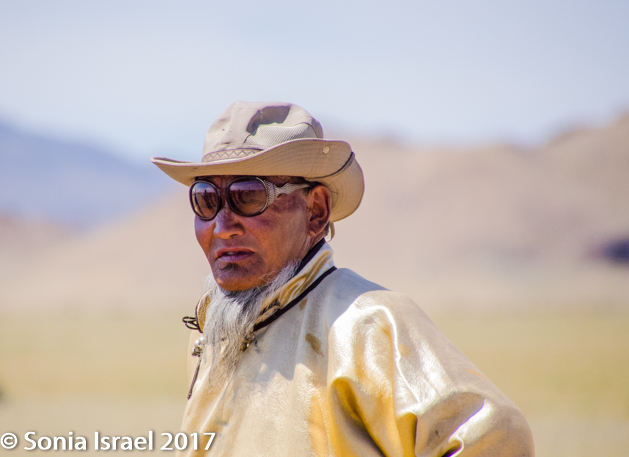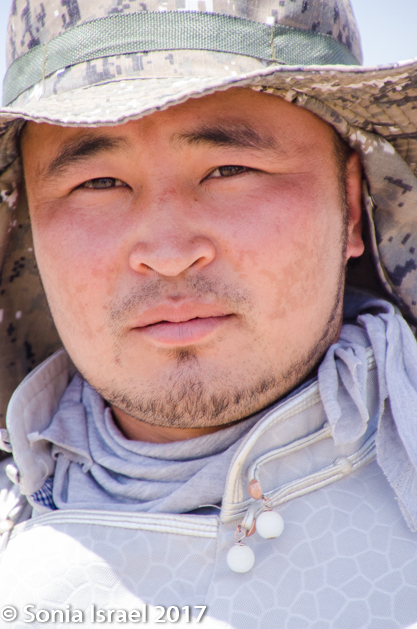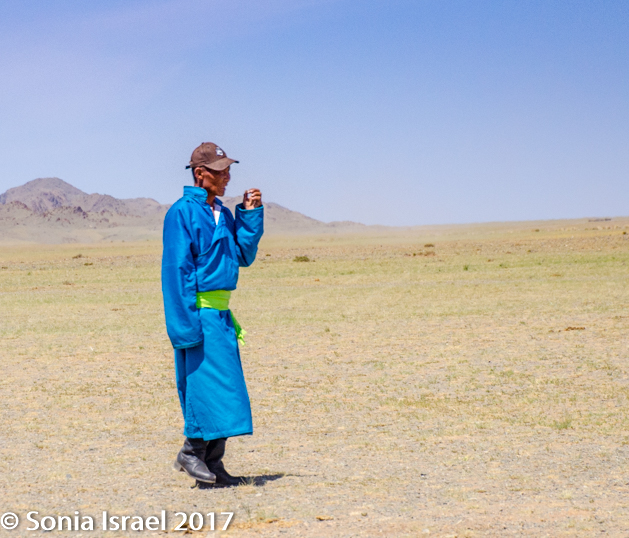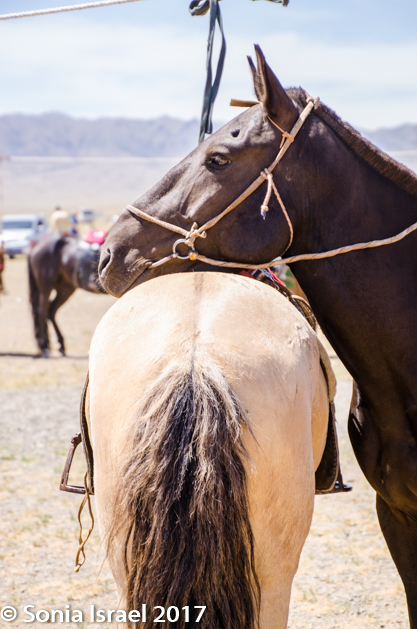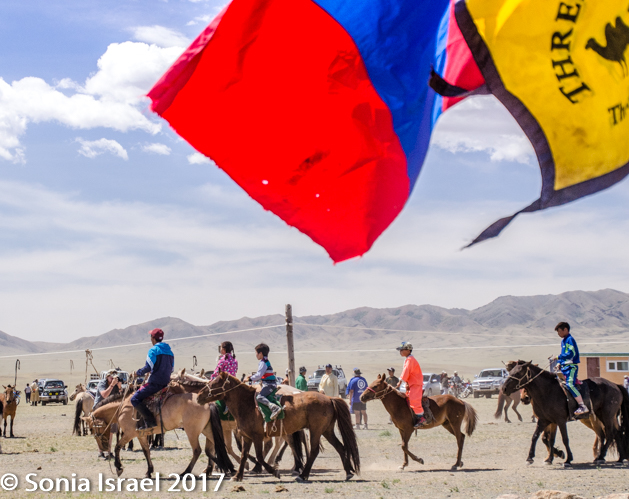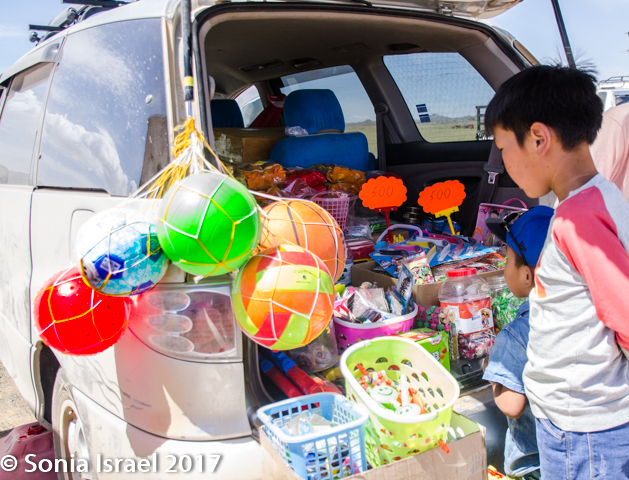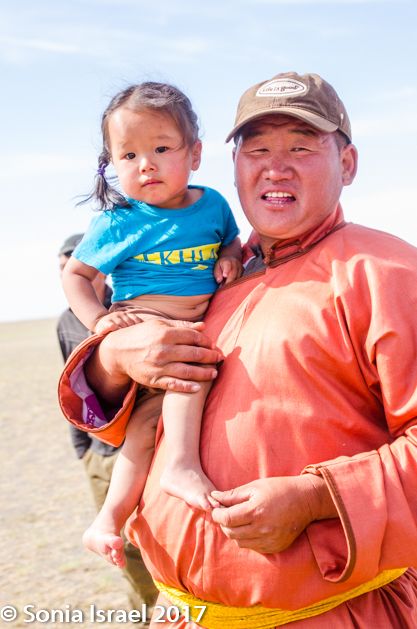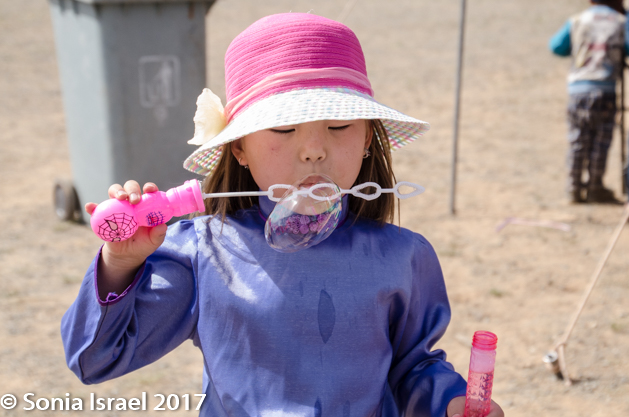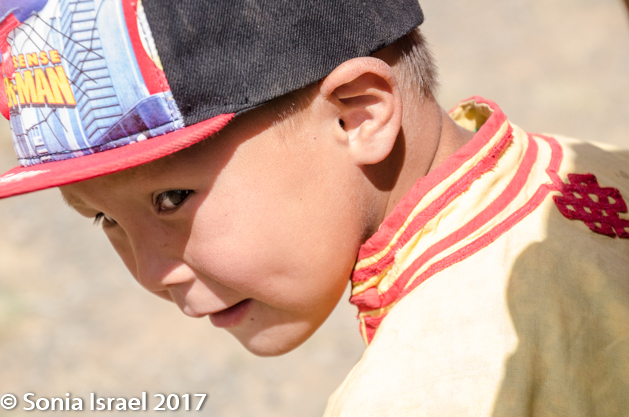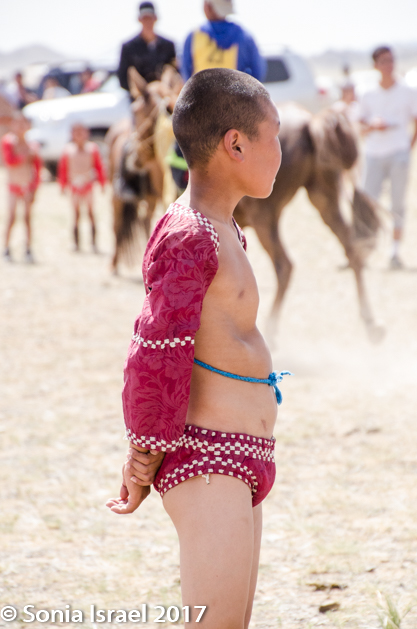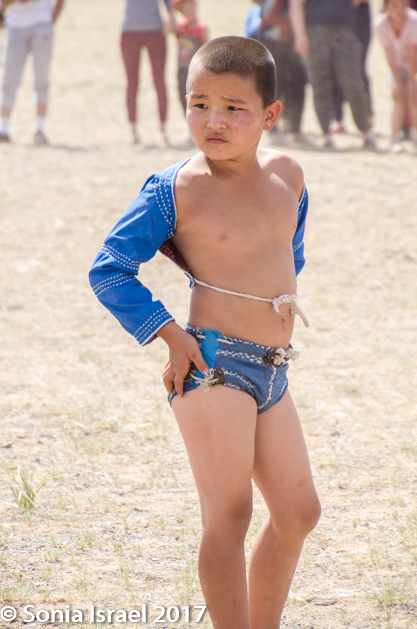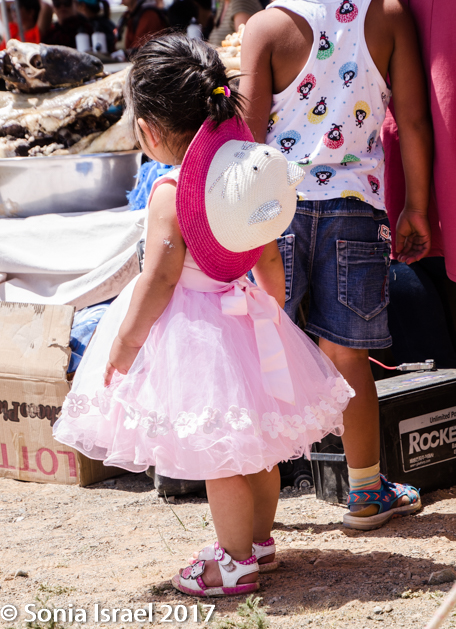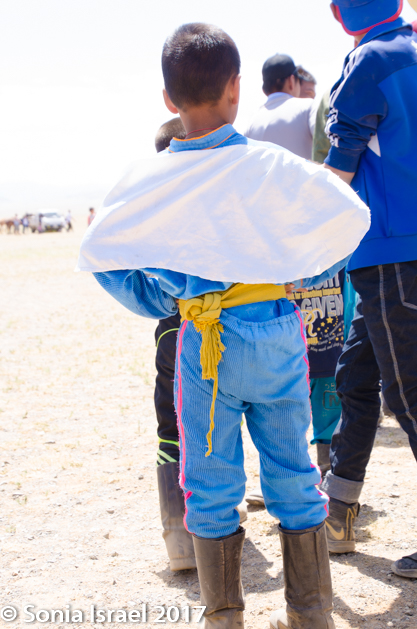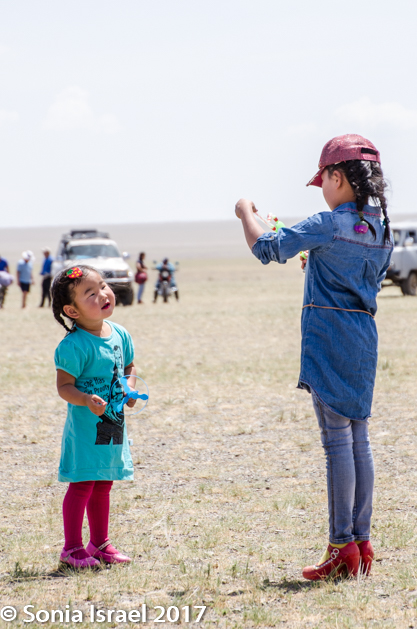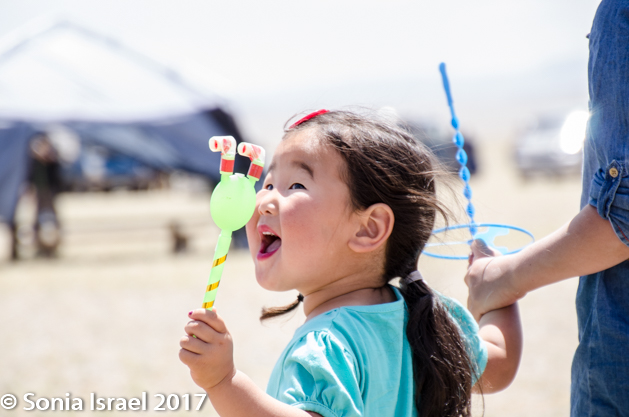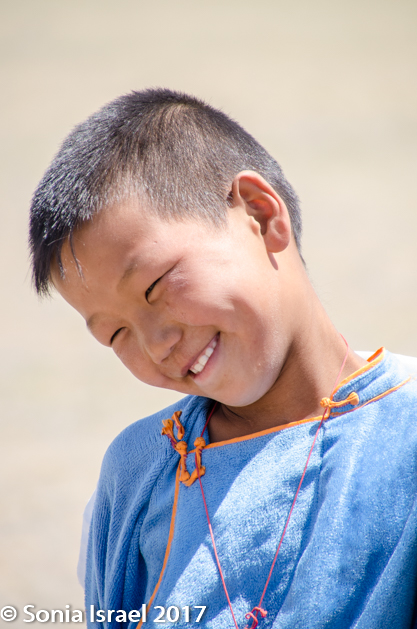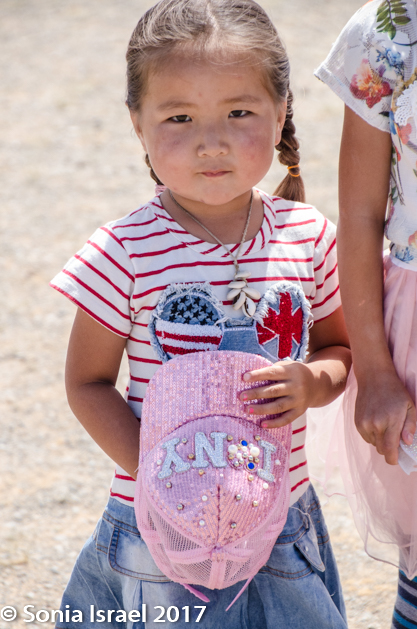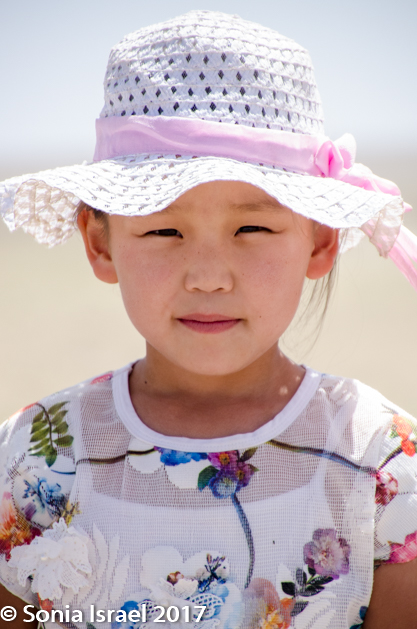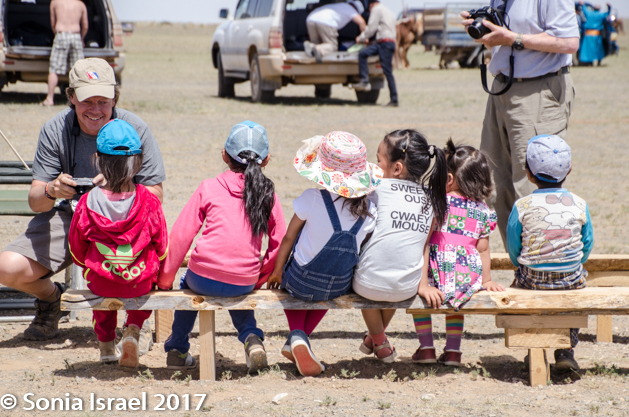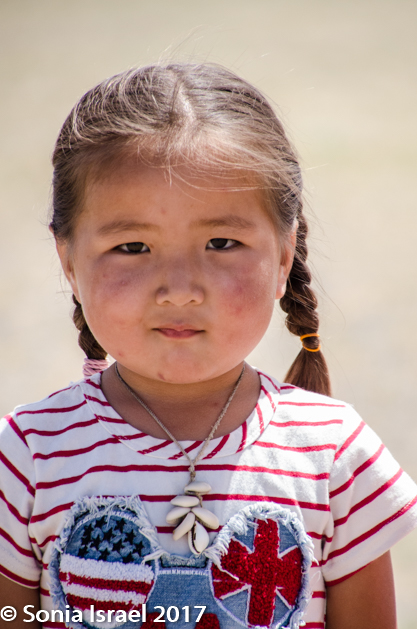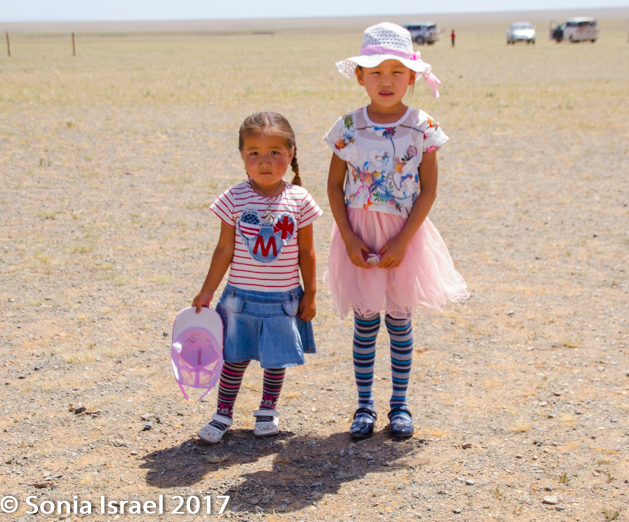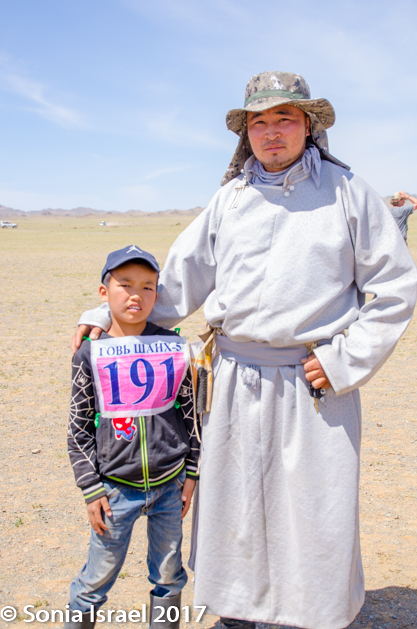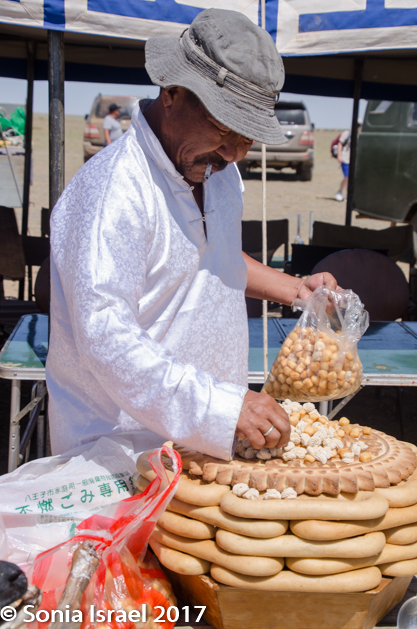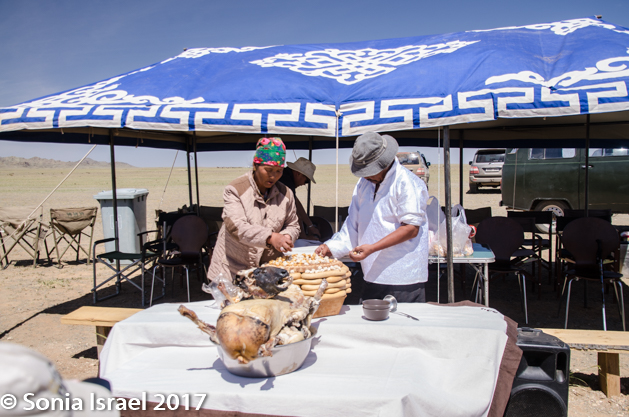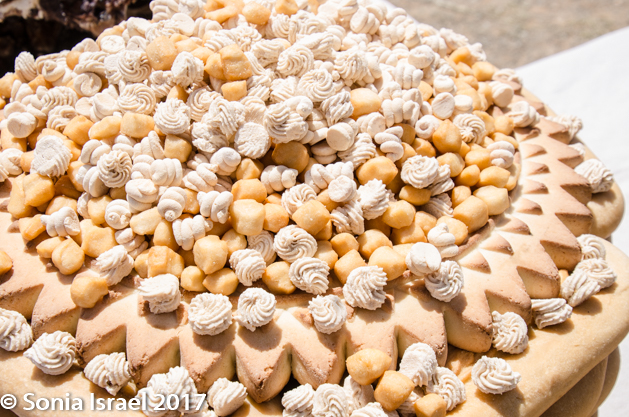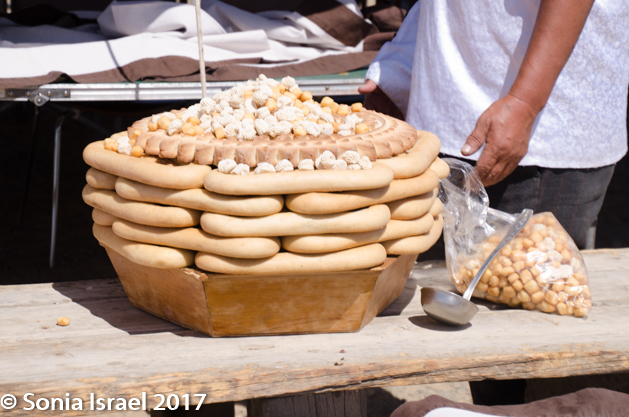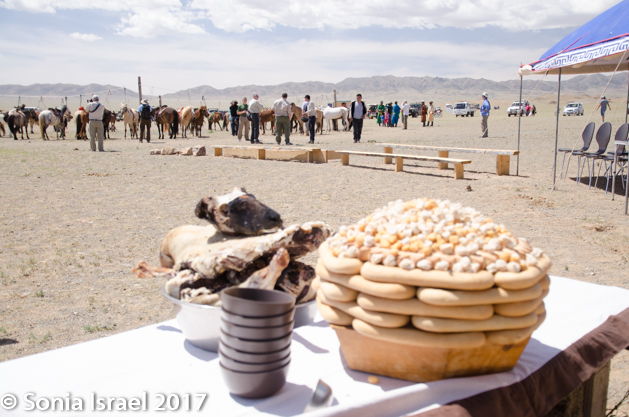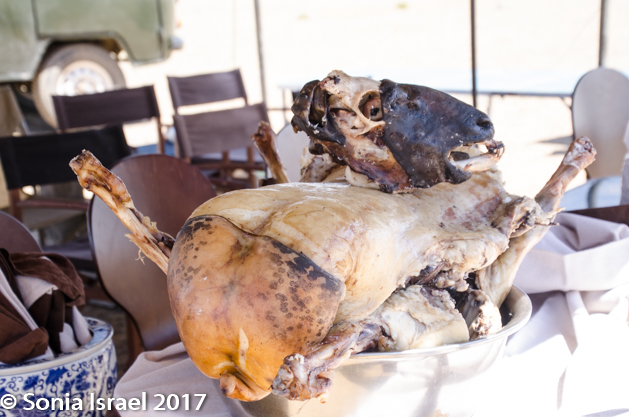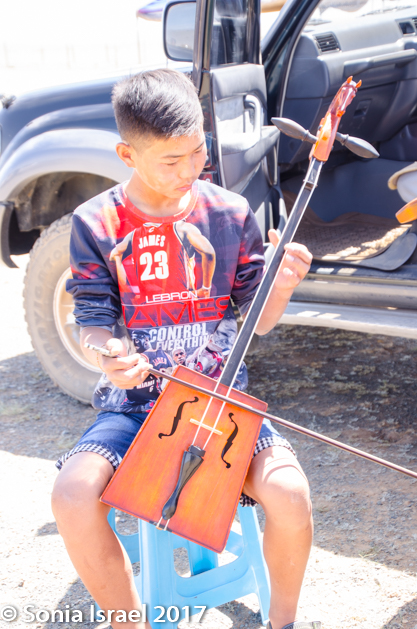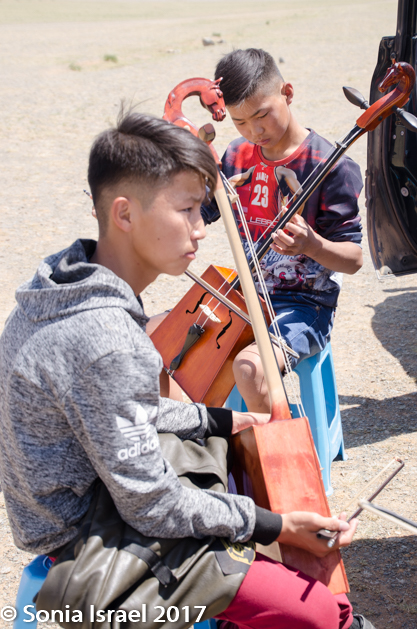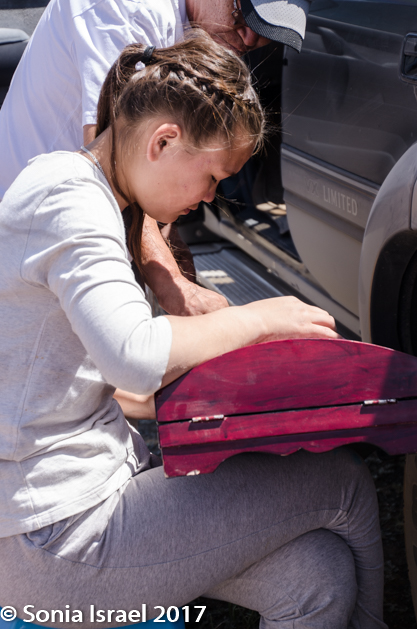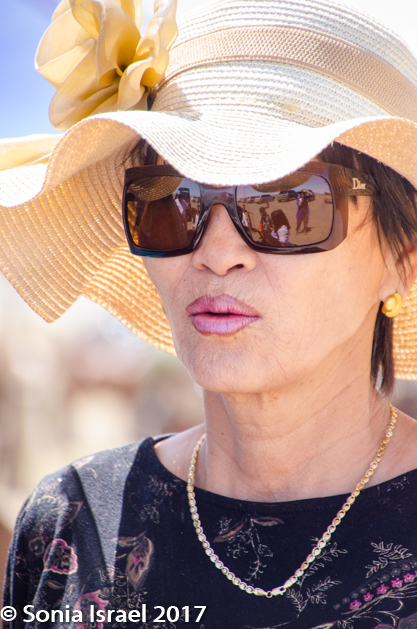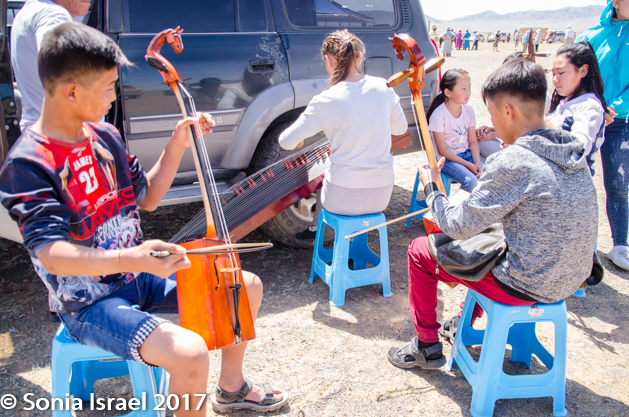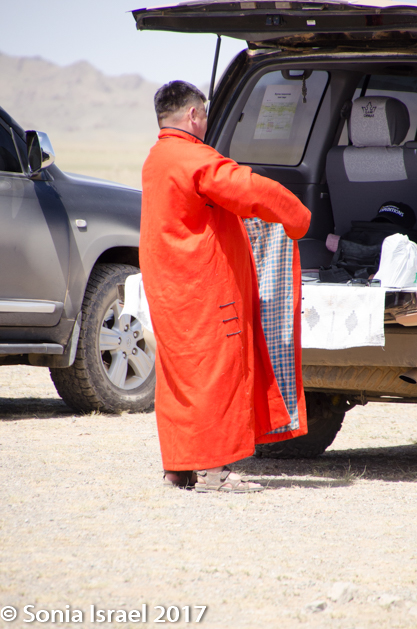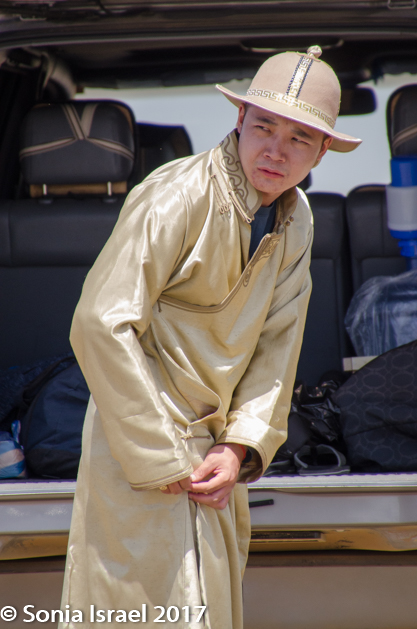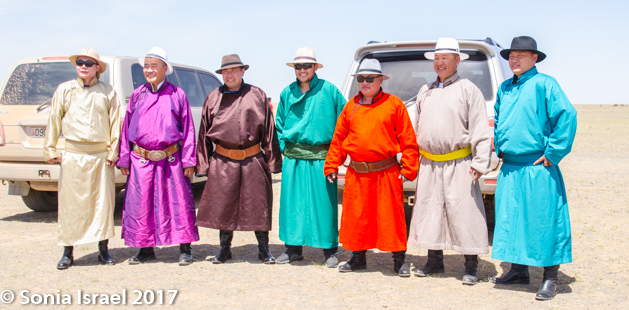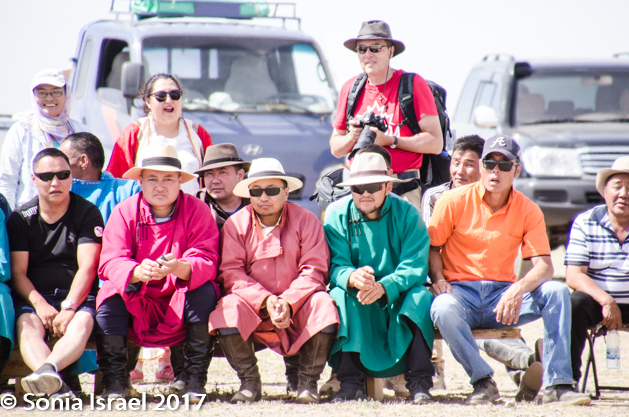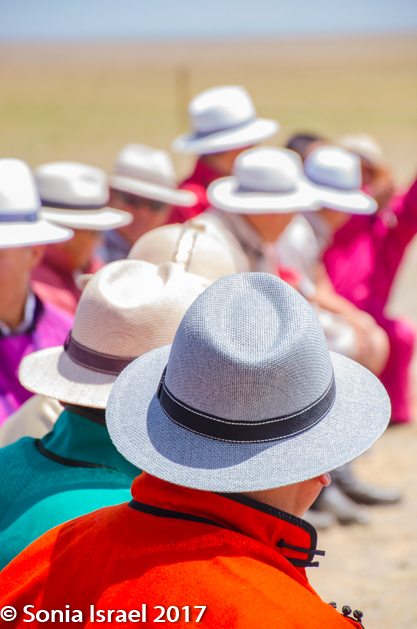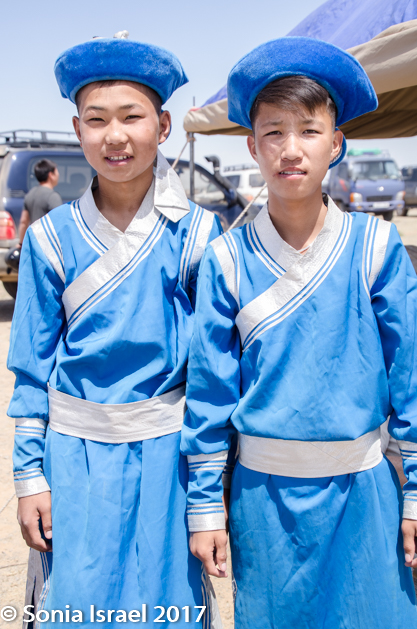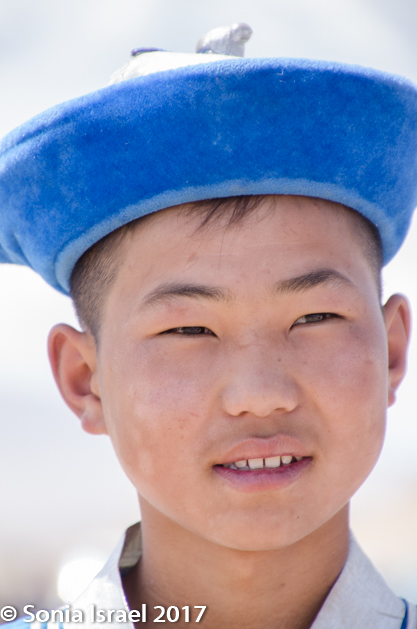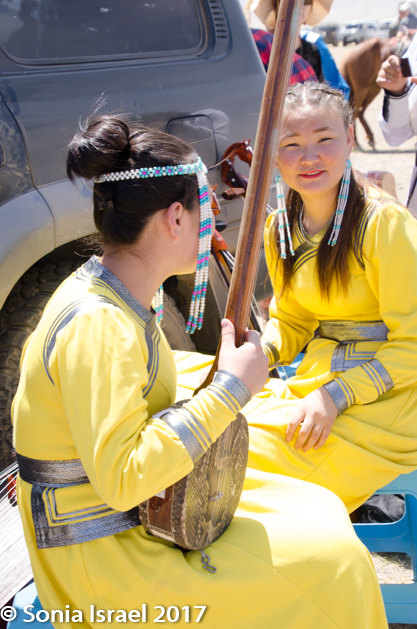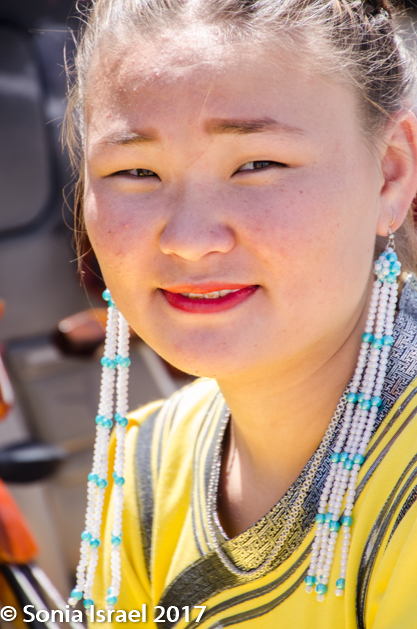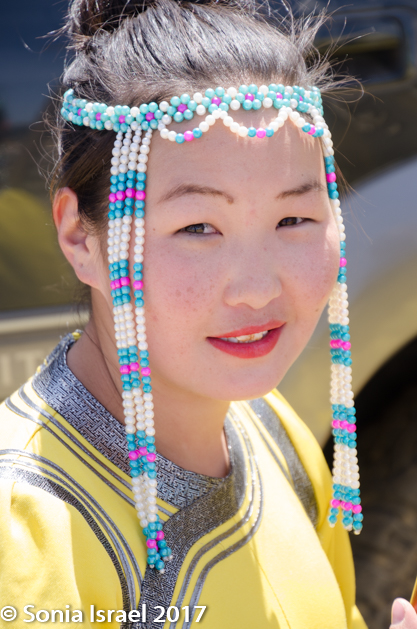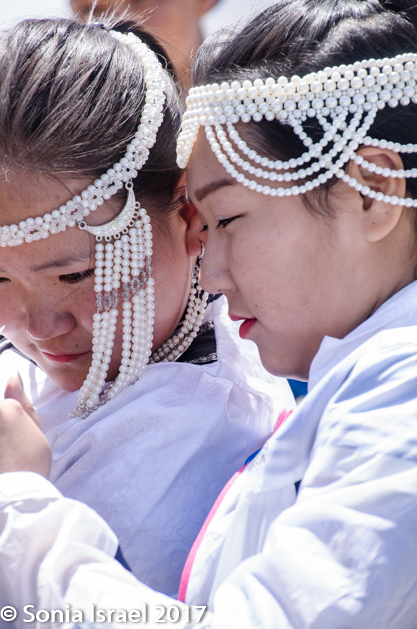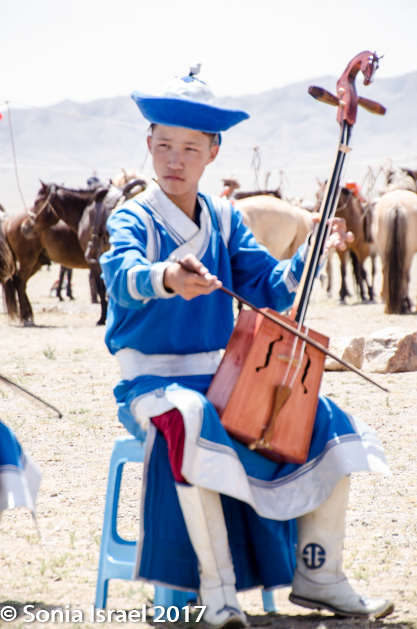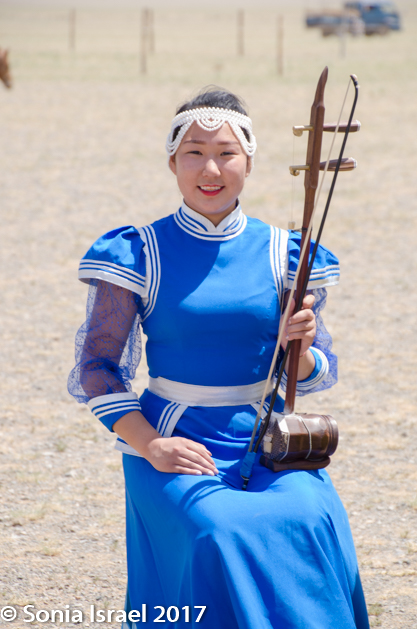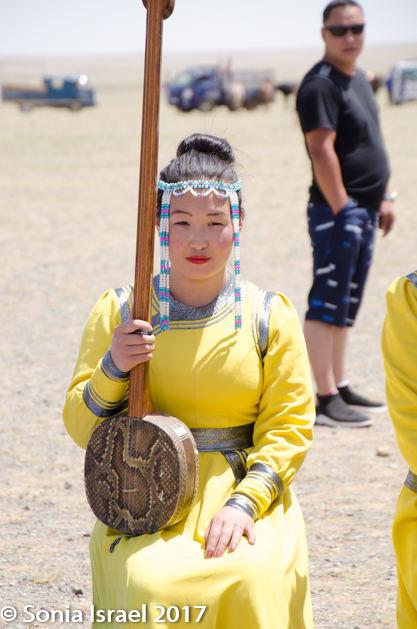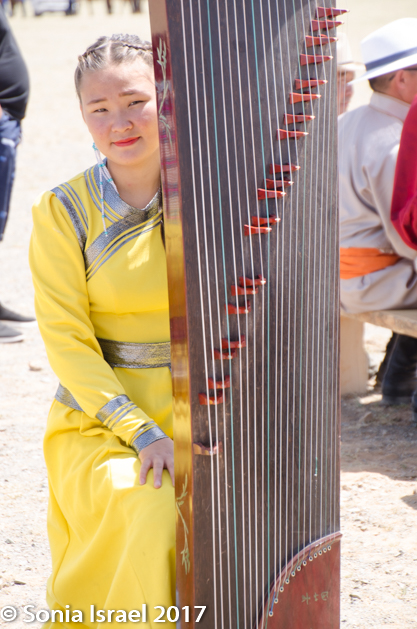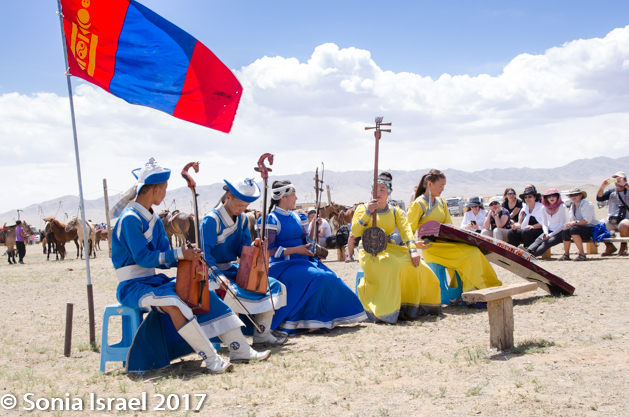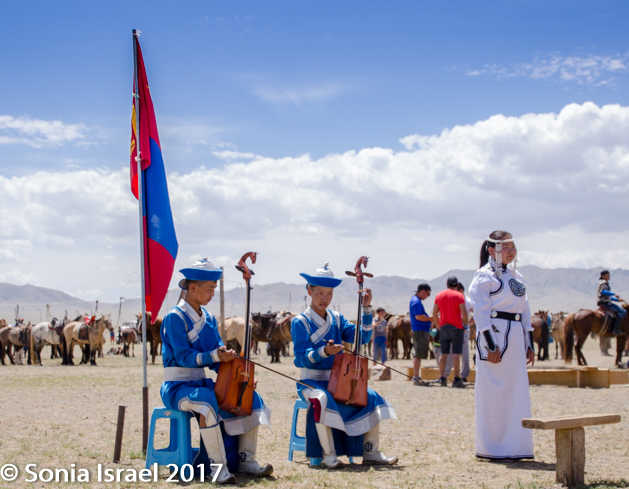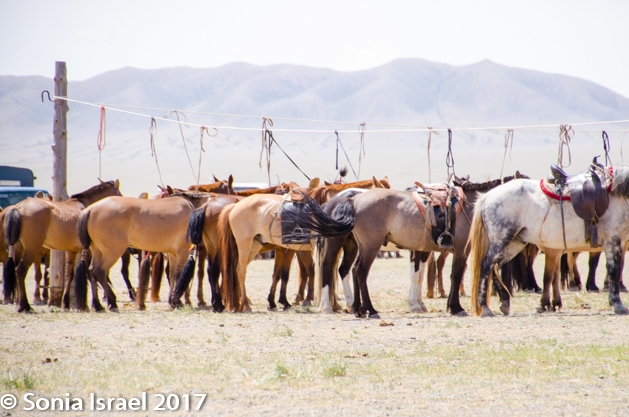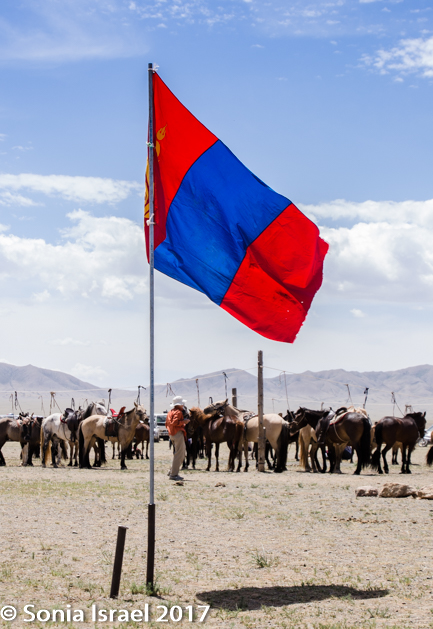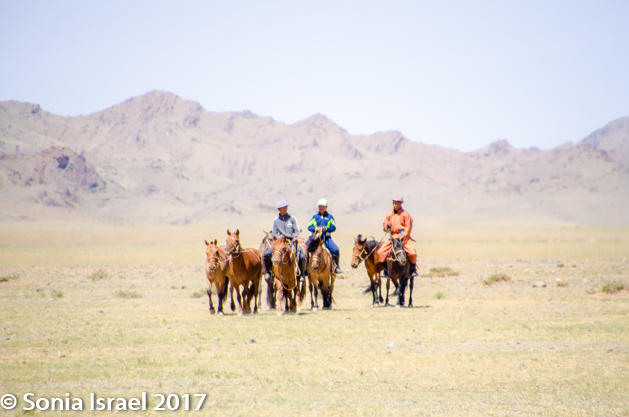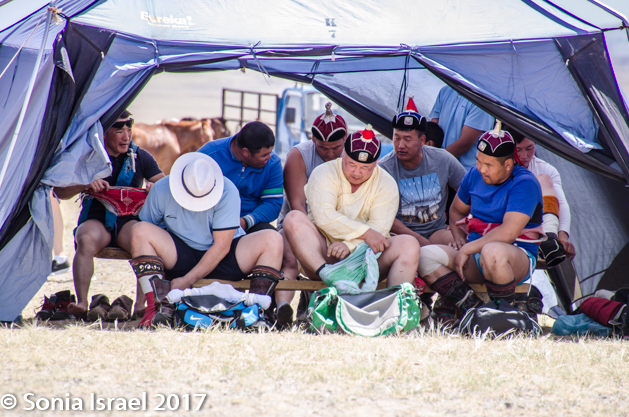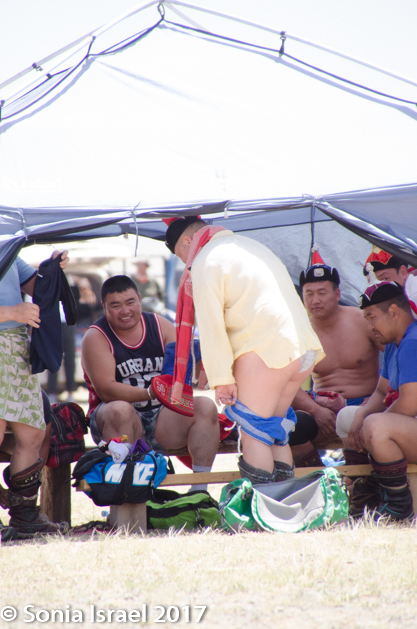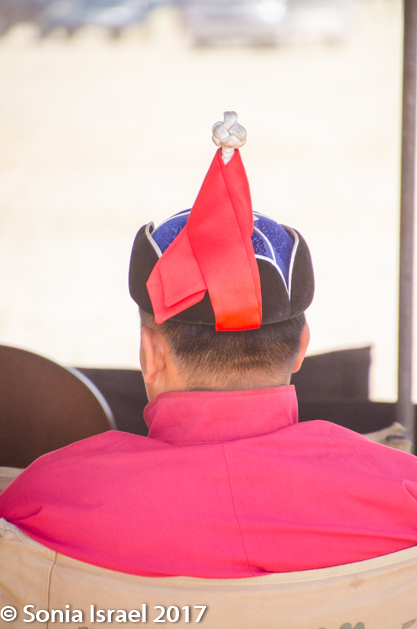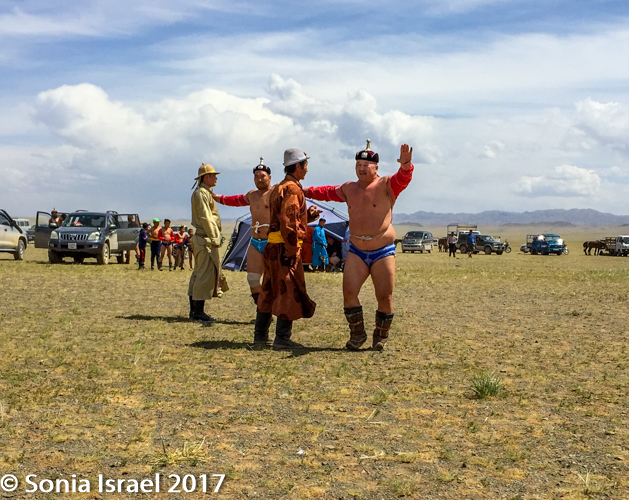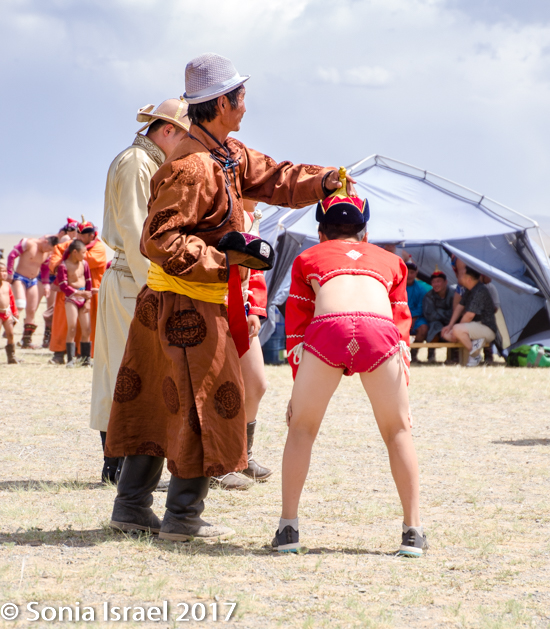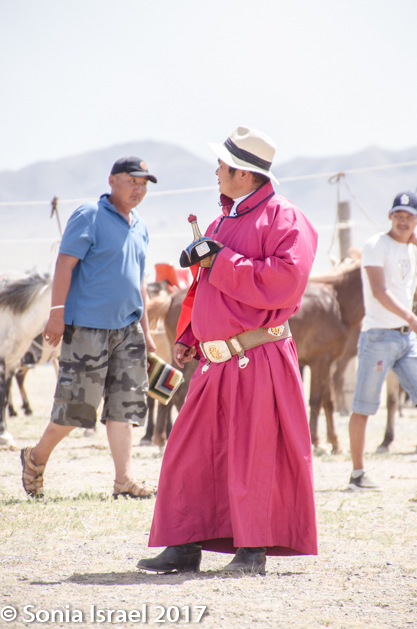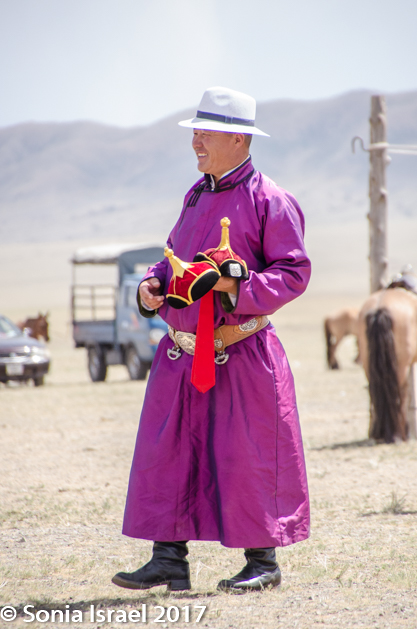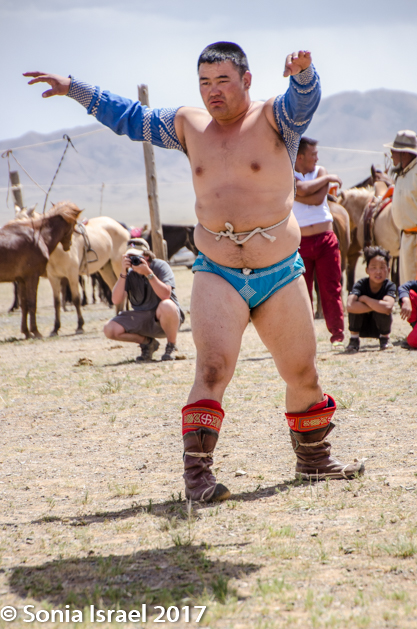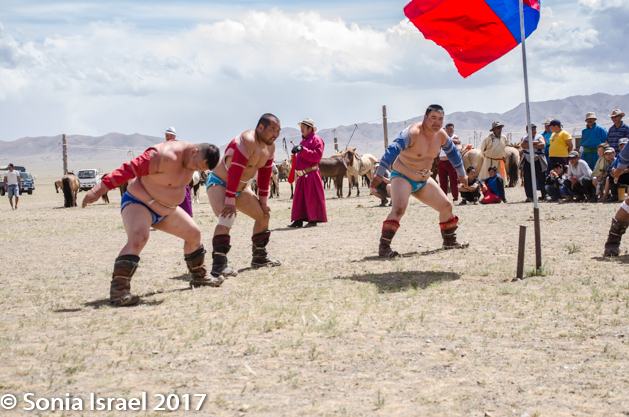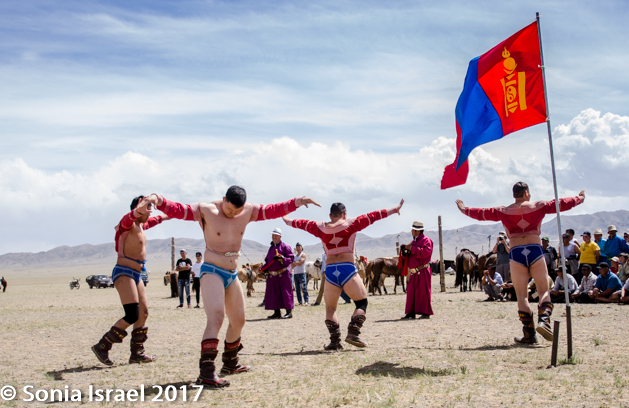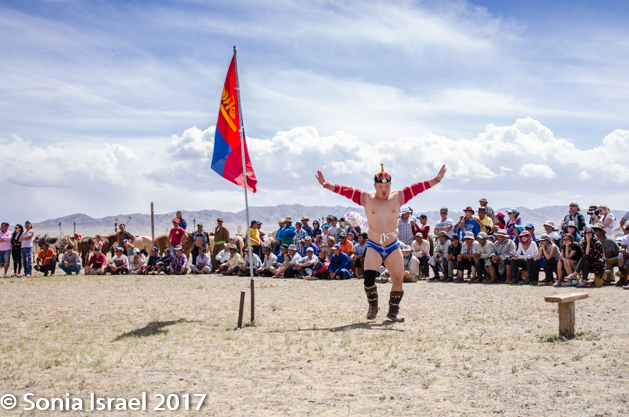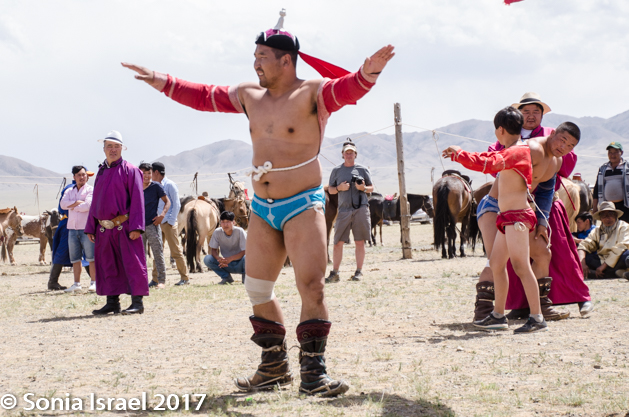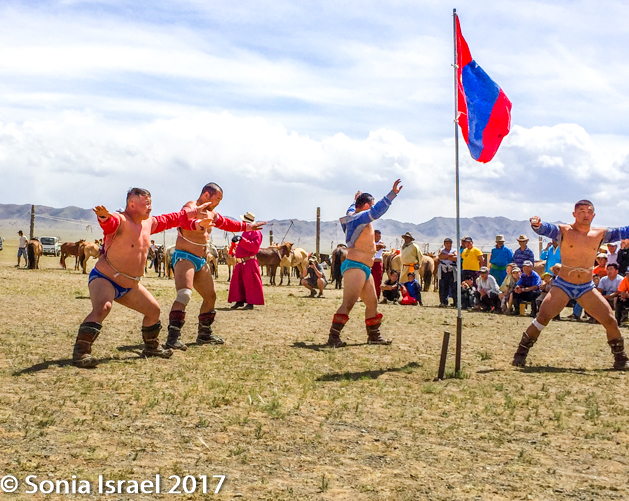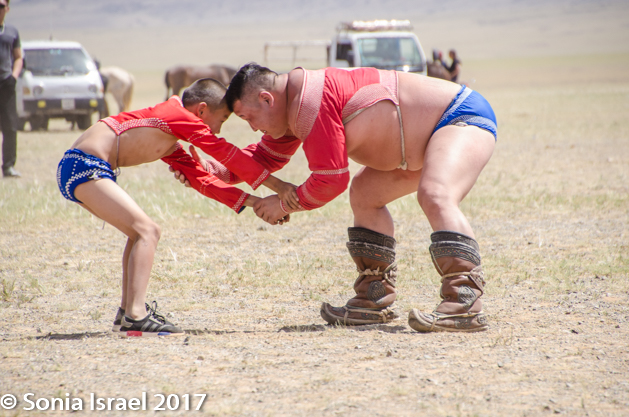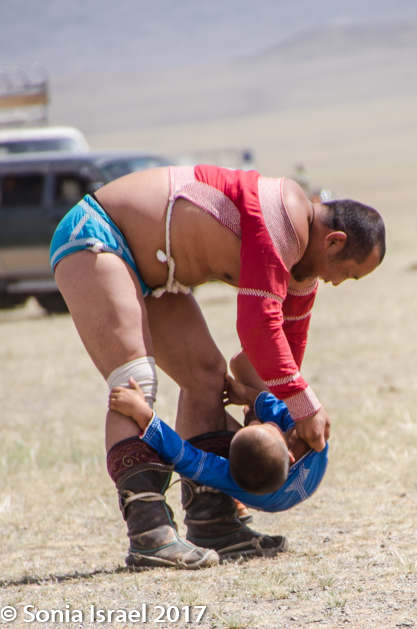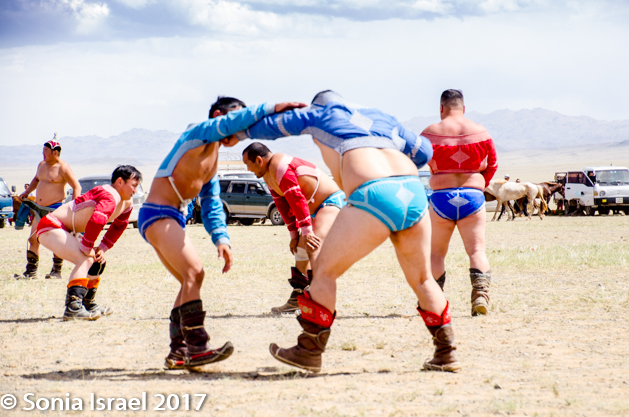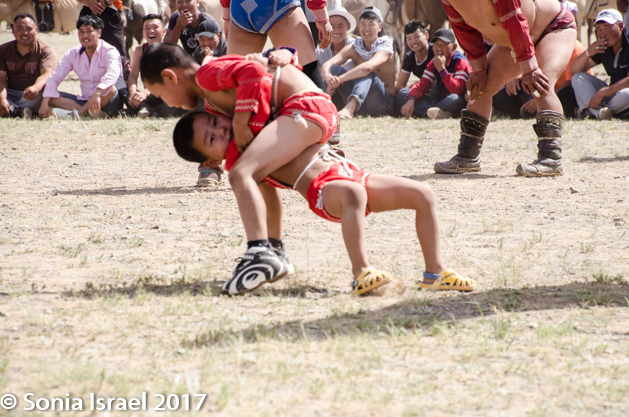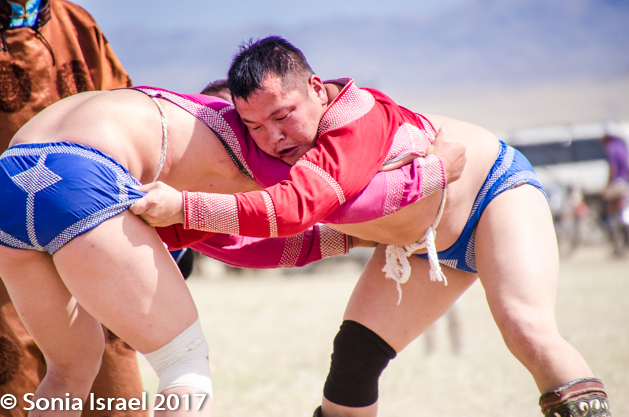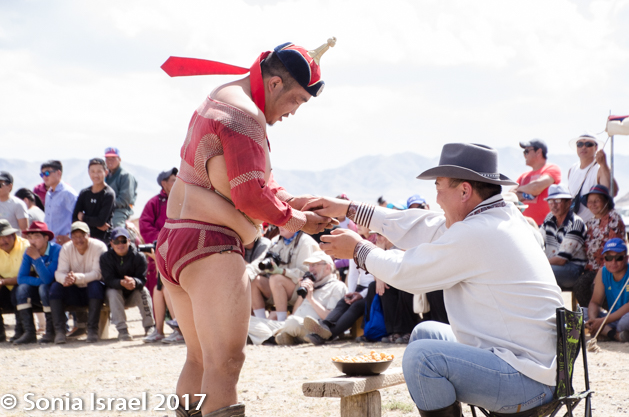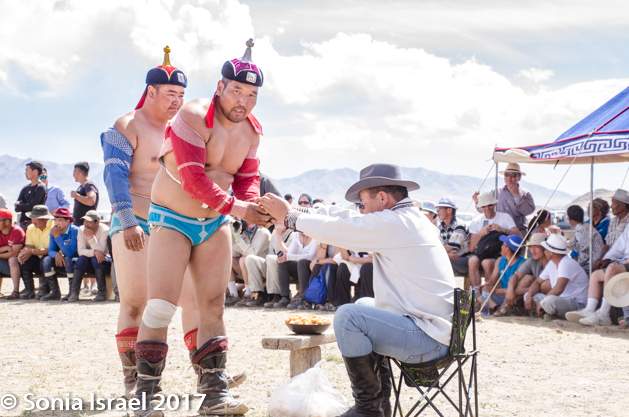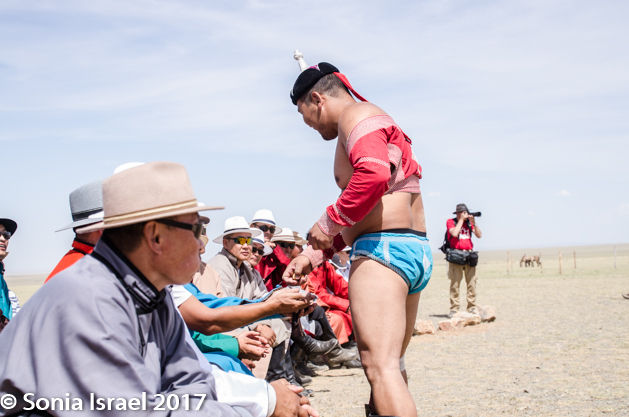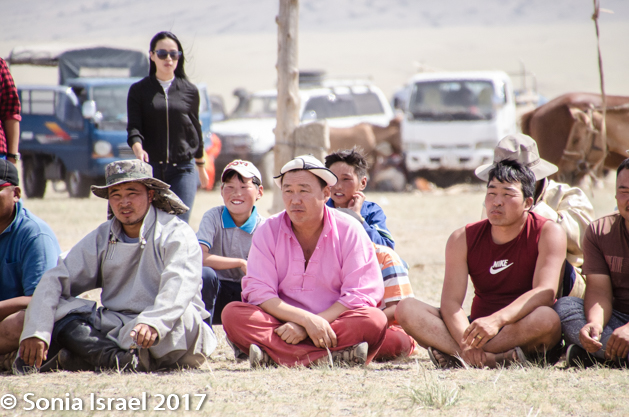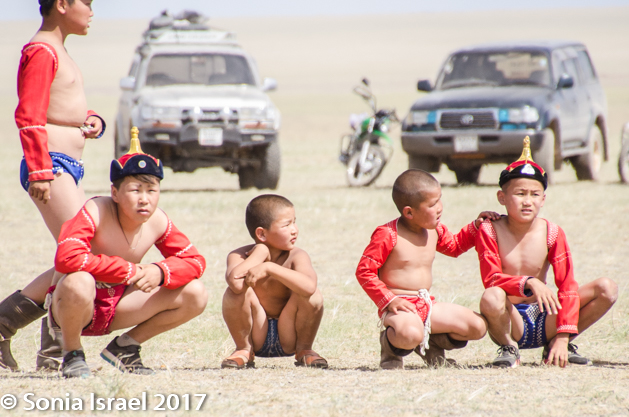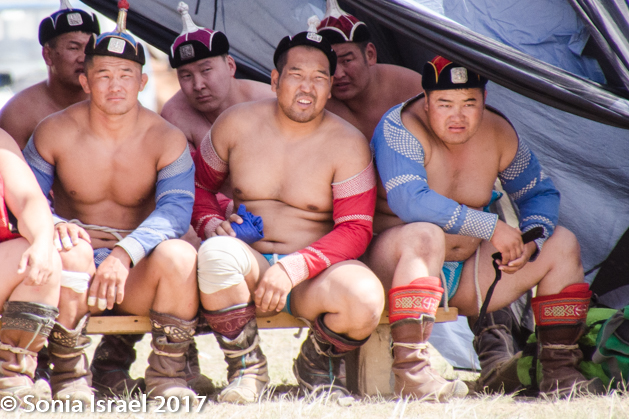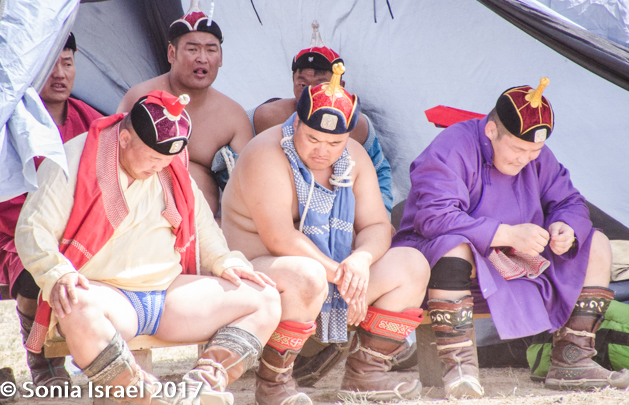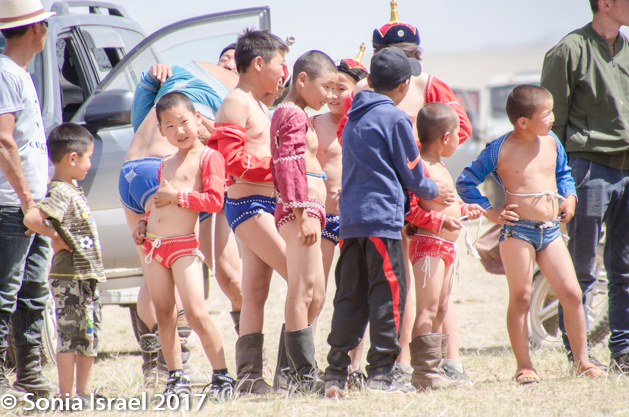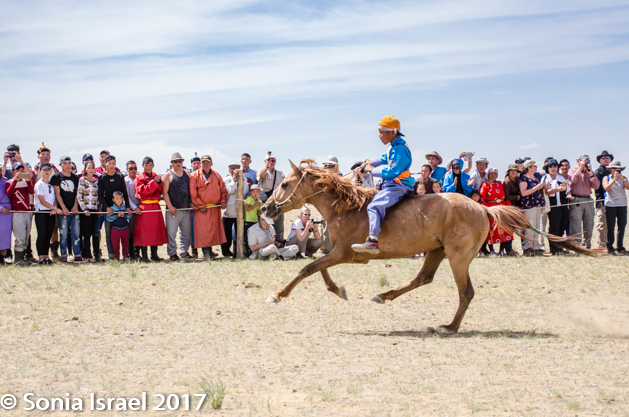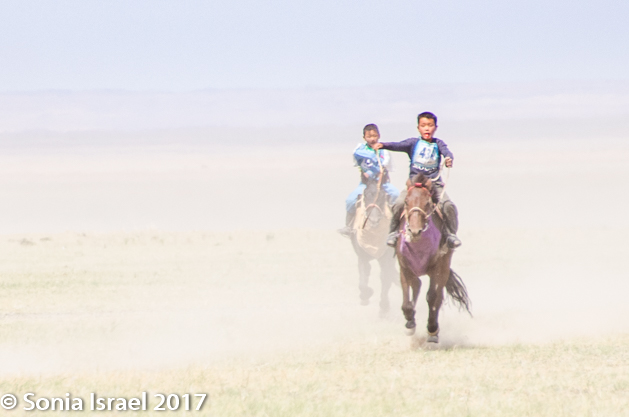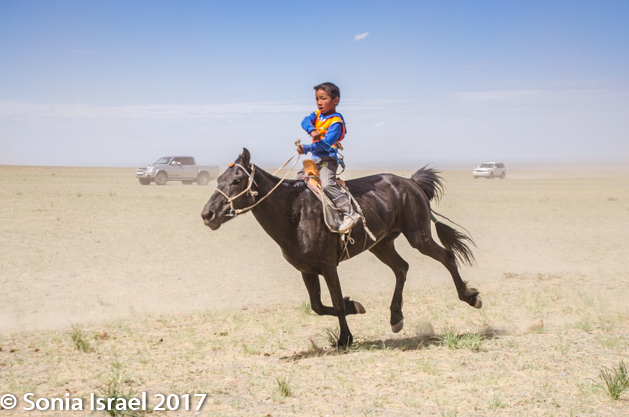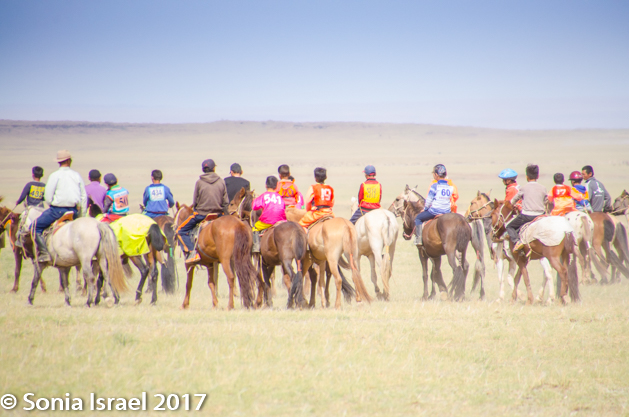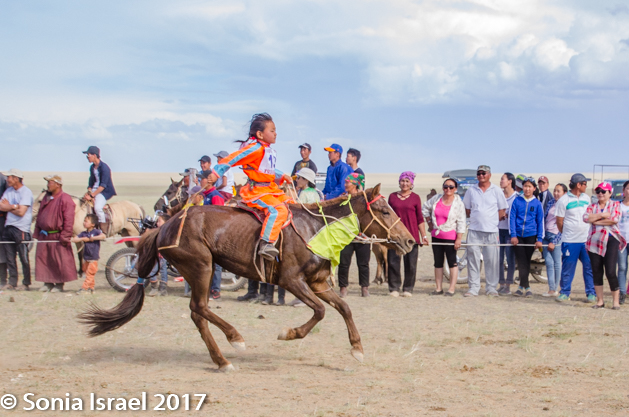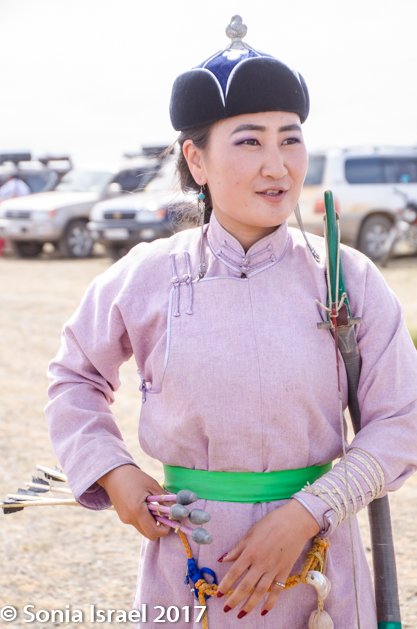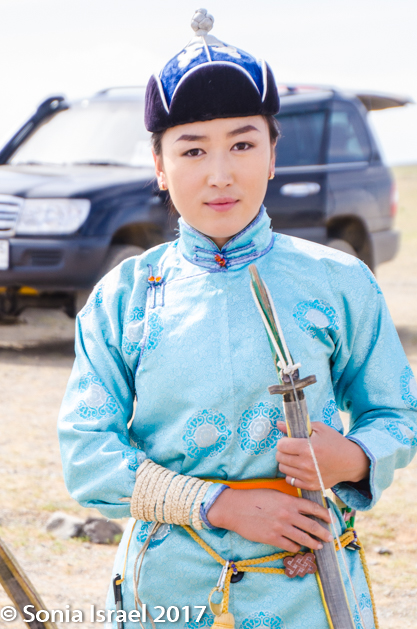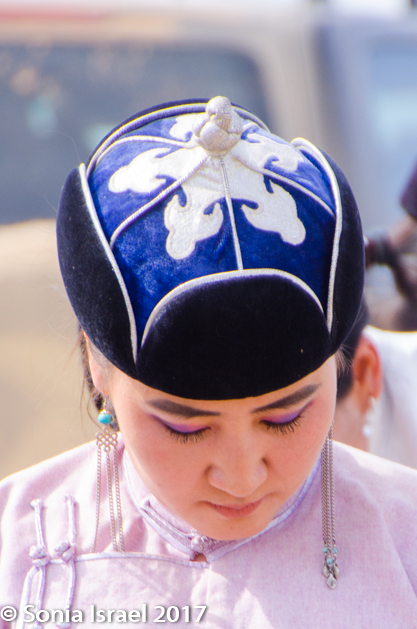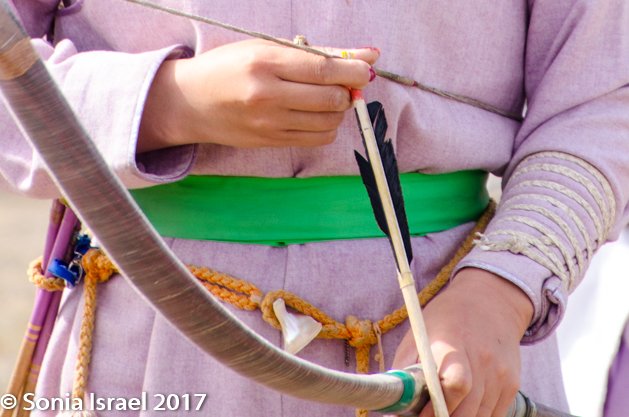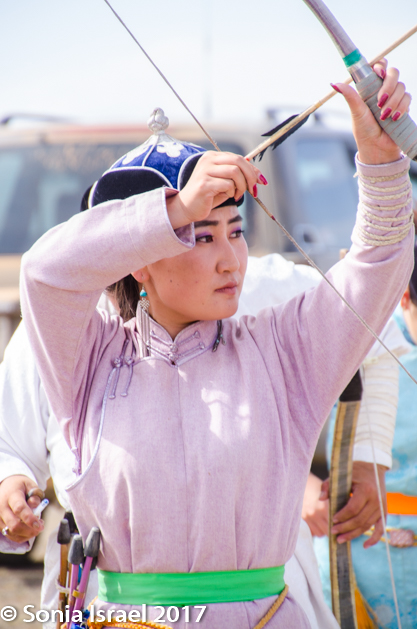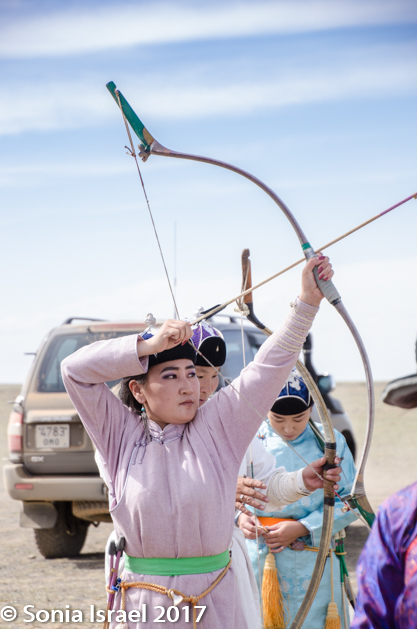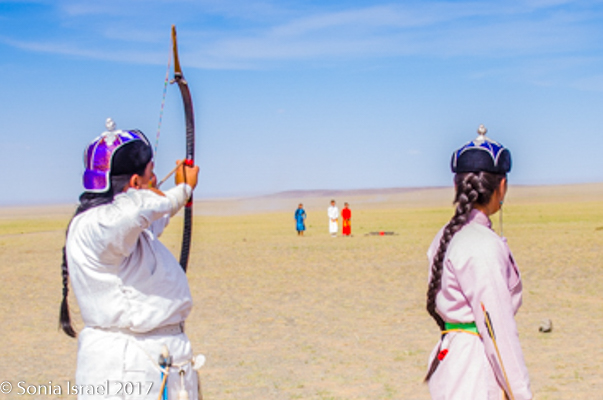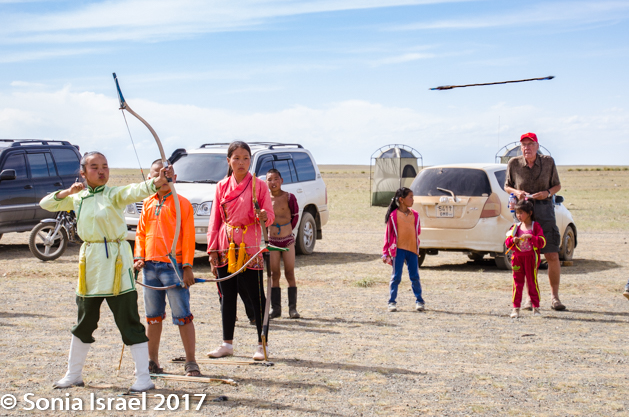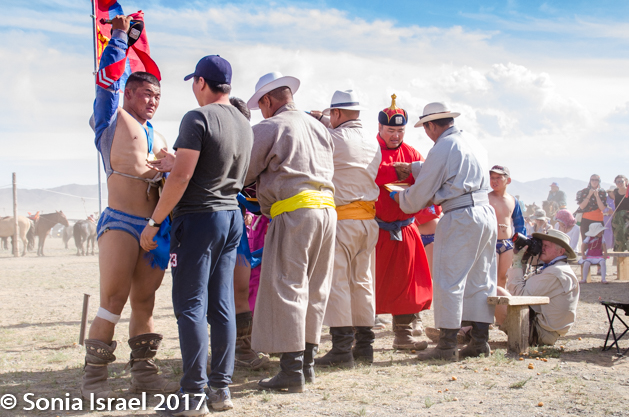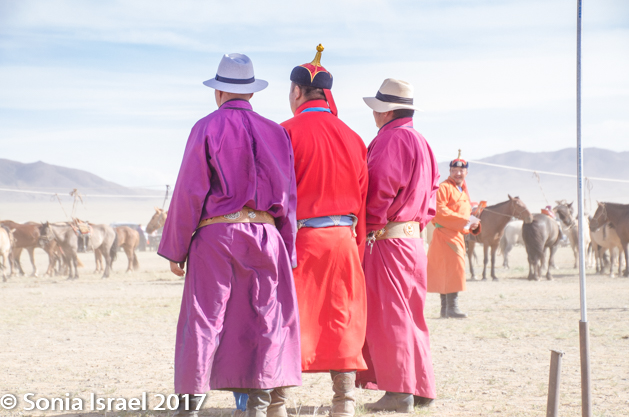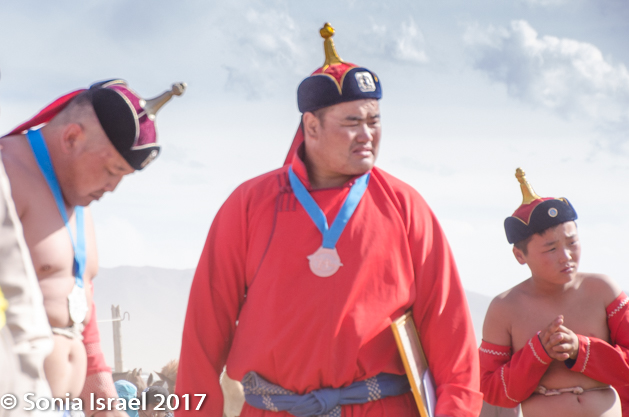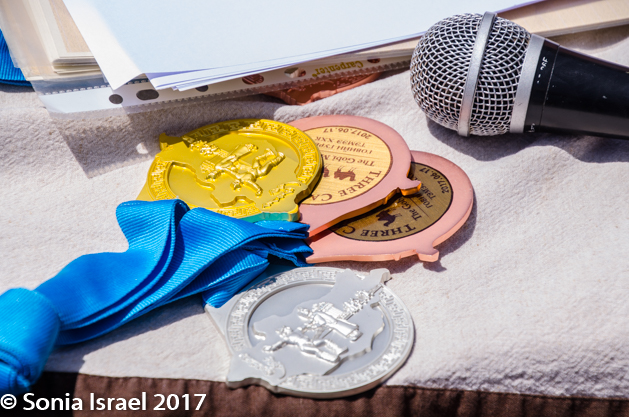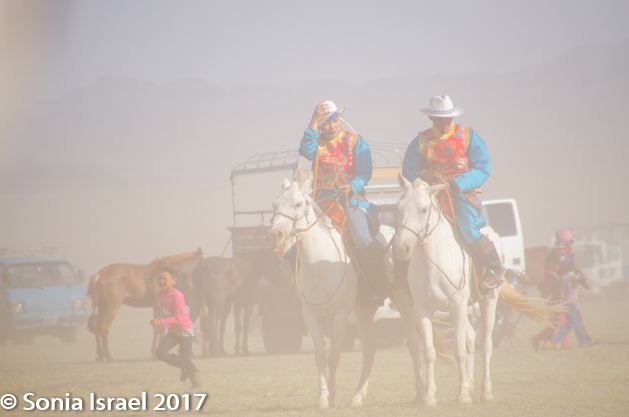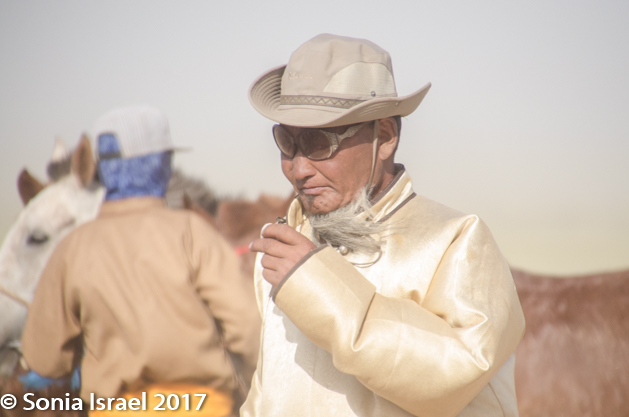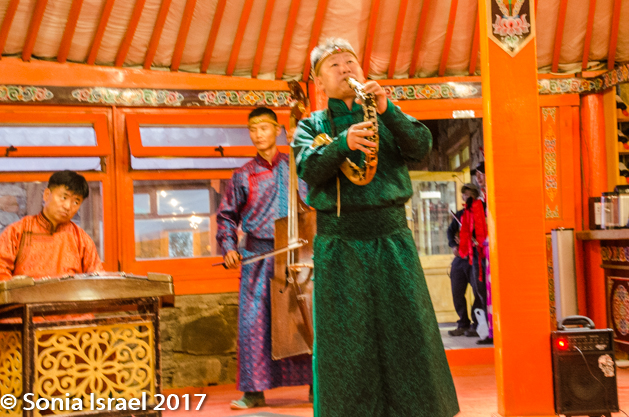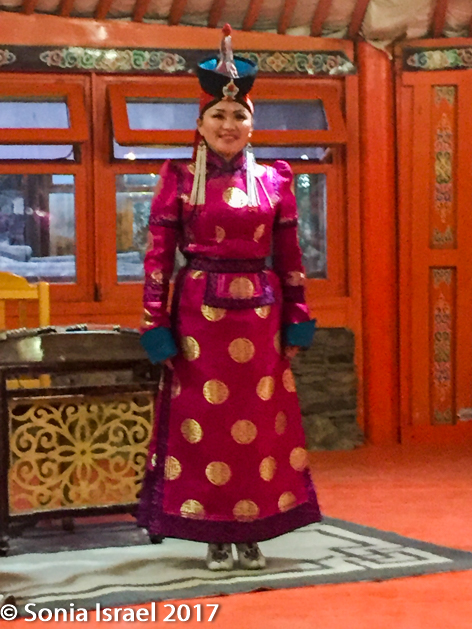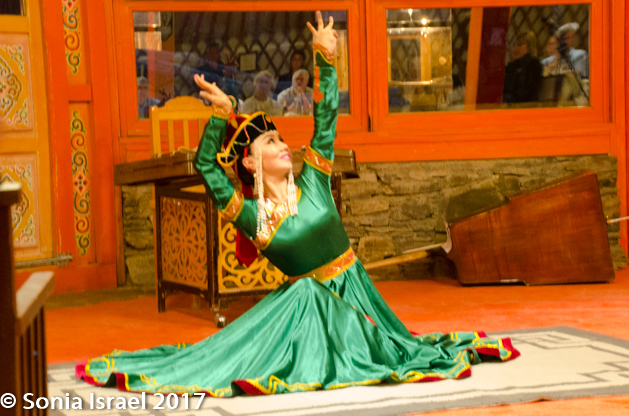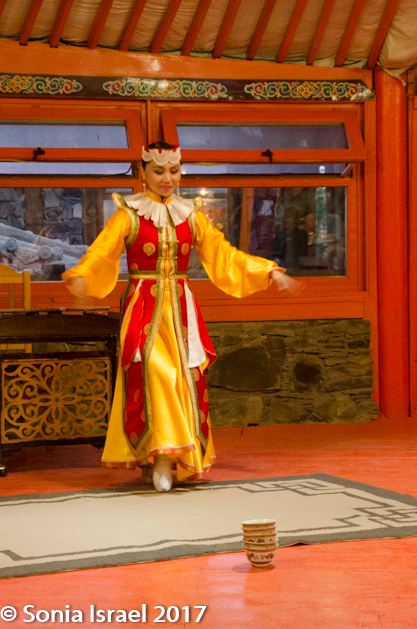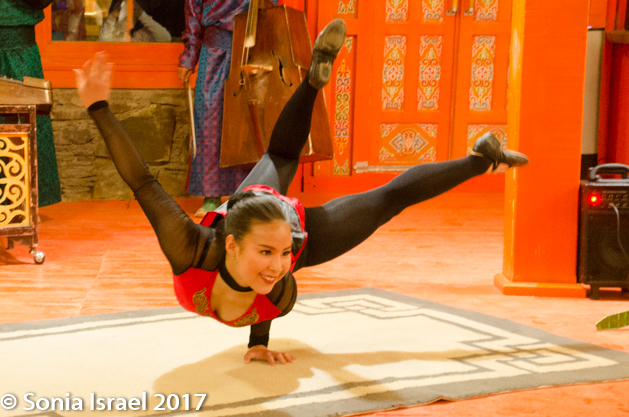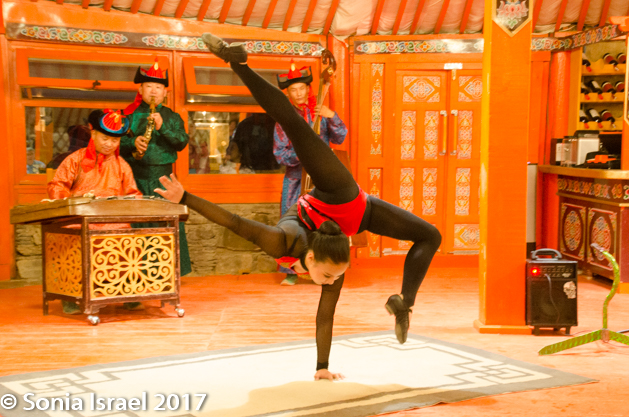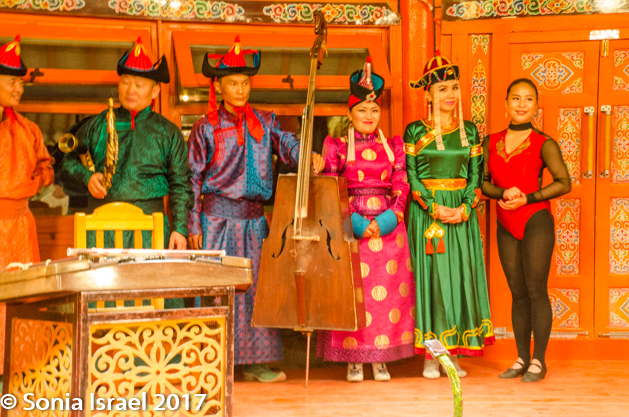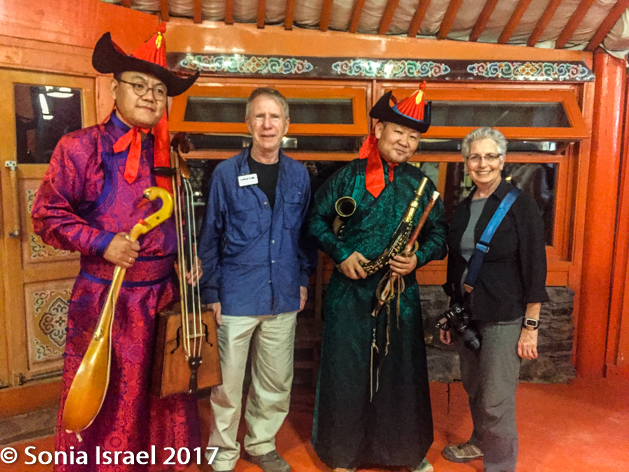National Geographic Trip to Mongolia, Saturday, Day 6, June 16, 2017
The Naadam Festival
The Naadam means ‘entertainment,’ ‘game,’ or fun,’ in Mongolian, and, when it first began centuries ago, was dedicated to the God of heaven and to the ancestors to plead for blessings. The Naadam originated as a military parade with sporting competitions following various occasions, including weddings or spiritual gatherings. Later it was used to train soldiers for battle. But it was always composed of the three main competitions – wrestling, horse racing and archery. Today the Naadam commemorates the 1921 revolution with the resulting independence from China. The fierce competition of the Naadam celebrates the skills needed to survive in the Gobi desert and the steppes surrounding it. The three main competitions, as mentioned above, are horsemanship, archery and wrestling, considered by locals “the three games of men (eriin gurvan naadam),” and called “Danshig” games. While it used to be only men competing, today you also see women in the horseracing and archery, and you see children in all three. And this age-old custom is celebrated with food, drinking and merriment. In general, it is individuals not teams who compete. Some also play games of shagai, sheep anklebones, that serve as game pieces and tokens of both divination and friendship (see Mongolia Day 1 for a description of this game).
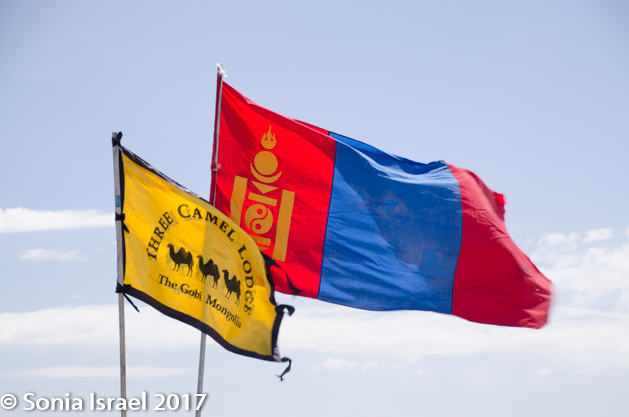 The main Naadam Festival takes place for three days in July at the sports arena in UB and in the outskirts of town. But local villages hold their own, smaller scale Naadam festivals in late June, and that is the one we got to go to and see. Ours was sponsored by the Three Camel Lodge. We didn’t have the elaborate opening ceremonies, but it was much more intimate.
The main Naadam Festival takes place for three days in July at the sports arena in UB and in the outskirts of town. But local villages hold their own, smaller scale Naadam festivals in late June, and that is the one we got to go to and see. Ours was sponsored by the Three Camel Lodge. We didn’t have the elaborate opening ceremonies, but it was much more intimate.
We got to the Naadam grounds early, and armed with our cameras, walked around watching, and when allowed (some people did not want to be photographed, and we respected that) and possible, photographing the horses who were tied to poles  awaiting their races, the men in their celebratory deels and their felt hats, the children all dressed up in their party clothes (it was after all, their biggest party of the year).
awaiting their races, the men in their celebratory deels and their felt hats, the children all dressed up in their party clothes (it was after all, their biggest party of the year).
The Children
For the children it was a true festival. There were vans filled with toys, balls, bubbles and other goodies for them to buy. The kids all knew each other and were running around in groups, curious about us just as we were curious about them. Many of the young boys were dressed for wrestling while other boys and girls had numbers on their backs for the horseracing competition. Some of the kids were in costumes, like a superman with a cape, or a Spiderman. I was especially charmed by the children. They all had the most beautiful smiles. They posed for us. Then got shy. Then posed again. Some of the little ones came over to touch us. Or hold on to our shirts. They laughed. They smiled some more. They were beautiful. And you could just tell how proud the parents were as they walked around with their children who were competing. Being a parent is the same worldwide.
The benches placed all around were still empty, and ours were the only  chairs under a canopy to protect us from the hot sun. There was one couple, an older man and woman, setting up the main table with the goat (to be eaten by all after the end of the festivities – although after sitting in the sun all day, I’m not sure who would have the courage to eat it), and the mountain of aaruul, a Mongolian delicacy made of curdled milk that is dehydrated and thoroughly dried in the air and sun. It is believed that the aaruul is one of the reasons that Mongolians have such strong and healthy teeth.
chairs under a canopy to protect us from the hot sun. There was one couple, an older man and woman, setting up the main table with the goat (to be eaten by all after the end of the festivities – although after sitting in the sun all day, I’m not sure who would have the courage to eat it), and the mountain of aaruul, a Mongolian delicacy made of curdled milk that is dehydrated and thoroughly dried in the air and sun. It is believed that the aaruul is one of the reasons that Mongolians have such strong and healthy teeth.
As I walked, I suddenly heard music. I followed the sound which led me behind one of the vans. And there were five young adults practicing the songs for our very own opening ceremonies. There were two young men playing the traditional instruments topped with a horses head, there were three young girls playing their traditional instruments, and one vocalist. I already wrote about some of the traditional insturments, the Morin khuur and the khuuchir in the blog from day 1, but today I saw another instrument I have never seen. It was being played by one of the young women. She had her back to me so mostly I could see her profile and braided hair. And the long, red stringed instrument, which it turns out is a yatga (or yatuga). It is a half-tube zither with a movable bridge, constructed as a box with a convex surface and an end bent towards the ground. It was huge, much bigger than her! Once it was once considered to be sacrosanct and played only at court and in monasteries, as the twelve strings symbolized the twelve levels of the palace hierarchy.
And then along with the kids was their teacher who was standing to the side conducting, instructing, encouraging and leading. And there was a woman, perhaps a teacher, perhaps a mother, with her big hat and big sunglasses, also watching over them. The kids were all dressed in jeans and t-shirts, but later would change into their traditional costumes, posing for pictures, the boys with their special hats and the girls with their beaded headdresses and very long traditional pearl earrings. But now I just got to photograph and video them being natural. The music was wonderful. They were very talented and it seemed particularly special to be allowed to watch their rehearsal behind a van.
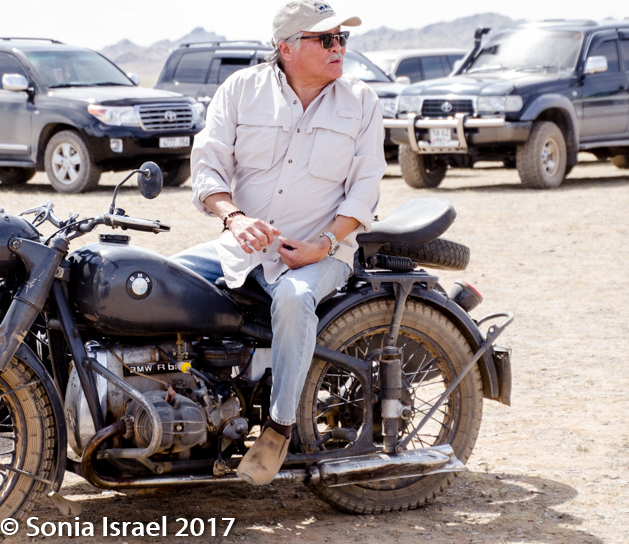 Jalsa arrived on his motorcycle. The benches started filling up. Families. Men who probably knew each other their whole lives, sitting together in the different Mongolian hats. Woman under their own umbrellas. Old people. Young people. And everything in-between. Our drivers in the meantime were all changing into their deels as they would also be participating in the Naadam festival. Each wore a different color but they almost all wore felt hats. And when they all sat together it made for a beautiful picture.
Jalsa arrived on his motorcycle. The benches started filling up. Families. Men who probably knew each other their whole lives, sitting together in the different Mongolian hats. Woman under their own umbrellas. Old people. Young people. And everything in-between. Our drivers in the meantime were all changing into their deels as they would also be participating in the Naadam festival. Each wore a different color but they almost all wore felt hats. And when they all sat together it made for a beautiful picture.
Opening Ceremonies
Our opening ceremony was the young adults that I had watched rehearsing, playing a few songs. Jalsa made a welcoming speech and the competition began. The wrestling was the first competition to begin, but as we learned the different competitions overlapped.
As the wrestling began, the horses started lining up and heading out to the distance in preparation for racing back.
Wrestling
Mongolian wrestlers have an important cultural status in traditional Mongolian society and are thought to embody ancient ideals of nobility, strength and chivalrous sportsmanship and the rituals are believed to have been virtually unchanged for hundreds of years. Unlike sumo wrestling or American wrestling, there is no ring in Mongolian wrestling. Rather it takes place in the open on a grassy field or, like in this case, dirt and sand. There are no weight classes and the object is to get your opponent to touch his back, knee or elbow to the ground
The wrestlers were all sitting in a tent on the other side of the game grounds and we could see them getting dressed. The wrestlers all wear a traditional costume which is always red and blue. The costume consists of a jodag, and shuudag. The jodag (or zodog) is a tight, collarless, short-sleeved jacket which is open but tied at the bottom with a simple string knot, exposing the wrestler’s chest. Of course there is a legend about tha too. According to the legend, on one occasion a wrestler defeated all other combatants, then and ripped open the jodag to reveal her breasts, showing everyone that she was a woman. From that day, the jodag had to reveal the wrestler’s chest. The shuudag are small, tight fitting (very tight fitting) briefs, sort of like speedos. These are supposed to make the wrestler more mobile and prevent the opponent from taking advangate by having something for them to grip. It also made for great viewing! On their feet, the wrestlers wear gutal, high leather boots with slightly upturned toes.
Four men, in this case our drivers in their deels, stood at the four corners of the wrestling grounds. Each wrestler has an “encourager” called a zasuul and I think our drivers were the zasuuls. Before they begin, each wrestler floats (or at least they look like they are floating), over to one of the zasuuls who removes the wrestlers hat. They then do the Eagle Dance (devekh). In this dance the wrestler is imitating a falcon or phoenix taking off. Imaging these large, muscular men, or in some cases, these small, scrawny boys, suddenly moving their arms like bird wings, and dancing/prancing around. It was so graceful, like a ballet. And so unexpected.
This unique dance is an integral and indispensable aspect of the wrestling tradition. It has its origins in shamanistic rituals in which people imitated movements of various animals, combining mystical and heroic imagery with mythical symbolism. Today, apart from its aesthetic value, the dance is also regarded as a warm-up and cool-down procedure before and after an intense fight. Good wrestlers take the dance seriously and are often better dancers.
And then the two opponents bow and begin by slapping their thighs to show they are ready to start. Each grabs the other by the string of their tops and they try to knock the other to the ground. Several pairs were wrestling at the same time, but the one that kept our attention was a large adult male wrestling with a small boy. This is how the kids learn. But let me tell you, although of course the young boy lost in the end, he held his own for quite a while. And I don’t think the adult man was going particularly easy on him.
Another cute pair were two young boys, likely under 6 years old. They barely  finished their eagle dance when one grabbed the other and threw him on the ground. That bout lasted about two seconds. But most of the adult pairs took quite a while for one to win over the other.
finished their eagle dance when one grabbed the other and threw him on the ground. That bout lasted about two seconds. But most of the adult pairs took quite a while for one to win over the other.
Every once in a while the zasuul would stop the match if one of the wrestler’s clothes got loose or entangled. This is part of the code of etiquette and his opponent is expected to stop attacking him and help to re-arrange them—even though this might mean sacrificing a good opportunity to win the match. Also, when one contestant throws the other to the ground, he is supposed to help the latter get back on his feet, before he dances his way out of the field. And whether they have won or lost, good manners dictate that the two opponents shake hands and salute each other and the audience, both prior to and after a bout.
When the match is over, the loser symbolically passes under the arm of the winner as a sign of respect (tahina uguh). And then the winner repeats the Eagle Dance, and goes over to the judge, gets something (perhaps some of the dough balls,I couldn’t tell for sure) and then goes and in great respect, hands them to each of the men sitting on the side in their deels and hats.
The wrestling competitions continued in this way until much later in the afternoon as each wrestler must wrestle once per round with the winners moving on to the next round. But at last they were down to the last two. Those two then wrestled each other. It went on and on as these were the best two in the area. At one point they stopped so everyone could go watch the next horse race. Then they took up where they had left off. Eventually one knocked the other down and we had our winner.
Watching the wrestling was fascinating, and not at all boring even though it was more of the same. But just as exciting was watching the people, and the other wrestlers, both young and old, watching the action.
Horse Racing
In the midst of all this, we were called over to the watch the horse racing. The main purpose of the horse racing is to test the skill of the horse. The jockeys were all younger children. As we stood on either side of the “road” where they would come barreling down, we could see the dust in the distance. And then suddenly one lone horse and rider would appear, double whips flying through the air from side to side. That was the winning horse and rider. And then there would be another, followed by a few more until finally a whole herd appeared as every rider began catching up.
- Here they come
- Heading off for the second race
- Winner of the second race
It was then back to our seats to continue watching the wrestling. And then at about 2:00, they called a break. Families began to picnic. Some of us went back to the lodge, and an hour later, we were back in our seats again. More wrestling. And while the wrestling continued, the archers appeared behind us.
Archery
Each archer had four arrows and the goal was to hit 33 “surs”. A sur is a small woven or wooden cylinder which is stacked up on other surs forming a small wall three surs high, approximately 8 inches high by 5 feet wide. Men shoot their arrows from 82 yards away while women shoot theirs from 71 yards away. Knocking a sur is a hit, and knocking one out of the center brings extra points. Each time a sur is hit, the judge (and the crowd) yells “uuhai” which is the equivalent of hooray. Once a sur is hit, the officials, in this case some of the previous archery winners, replaces the sur in preparation for the next archer. The winner becomes that year’s national marksman or markswoman.
Award Ceremony and more Contests
At the end of the wrestling, there was an award ceremony and the top three winners had gold, silver and bronze medals placed around their necks.
And then it was time for some more competitions. The first was riders, going full speed on horseback, trying to bend down and pick up a long stick.
And then there was the best dressed competition – which couple had the most beautiful costume. But at this point the wind was picking up and the sand began to fly. Yes, it became a full-fledged sandstorm.
We retreated to our vans and our driver drove as close as he could so we could watch from the car. But at one point the air was so thick with sand that we could barely see. To reluctantly we left the festival and headed back to the lodge.
A Musical Evening
That evening, after dinner, Jalsa had a surprise for us. We were entertained by a group of musicians, singers and a contortionist. One of the musicians played an instrument I had never seen before and it made the most beautiful sound. It was a surnai or ever buree, a sort of wind instrument played with a reed like an oboe but with a conical body made of wood (such as black ebony) or horn (which is what ever buree means). At the end it gets wider again, like a clarinet. That bell shape is slipped underneath the player’s right arm. But the sound it made was absolutely beautiful, and to my hear, nothing like a clarinet (which can also be beautiful, don’t get me wrong, but it just sounded different).
Throat Singing
We also got to hear the amazing Mongolian throat singing (khoomei which means throat). In throat-singing, a singer uses a combination of movements of the lips, throat, tongue or jaw, which produces two or more notes simultaneously creating unique harmonies. The circular breathing allows them to hold notes for a long time.
Singing in this style gives the impression of wind swirling among rocks. In fact the human mimicry of nature’s sound is seen as the root of throat singing. One reason the nomads love to sing is that it helps keep them away on their long rides. And as we learned on our first night on the steppes when we were up on the mountain and we heard singing from down in the valley, the open landscape of Mongolia allows for the sounds to carry a great distance.
The Bowl Dance and Contortionist
But that wasn’t all. There was woman who did the bowl dance, dancing with a stack of bowls on her head. And then there was the contortionist. I have no idea how anyone can do what she did with her body. It was reminiscent of Cirque du Soleil. After the concert, we all posed for pictures.
We then all went off to bed as we once again we would have an early morning for our next adventure. I was hoping to try to shoot the milky way that night, but it rained. Yes, rain in the desert. So if you go, be prepared.
